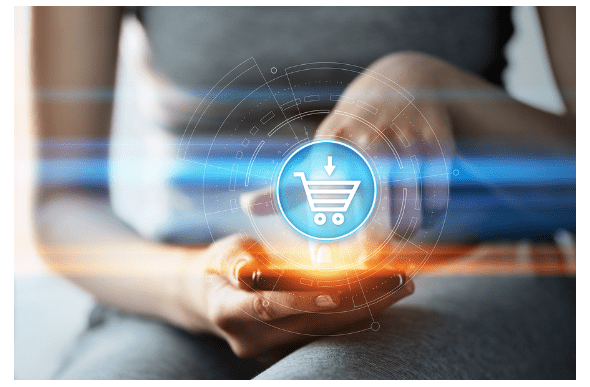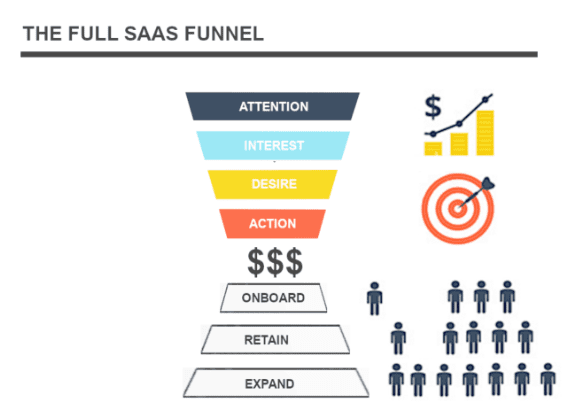Table of Contents
Toggle
How to Optimize Your Marketing Funnel for SaaS and Maximize Conversions?
Optimizing your marketing funnel for SaaS can help maximize conversions and drive growth for your business. Here are some critical steps to follow:
- Identify Your Target Audience: You need to understand your ideal customers, their pain points, and what motivates them to buy your SaaS product. This information will help you craft targeted messaging and optimize your funnel accordingly.
- Create a Seamless User Experience: Your marketing funnel should provide a smooth and seamless user experience from start to finish. This means optimizing your website, landing pages, and email campaigns for clarity, simplicity, and ease of use.
- Nurture Leads with Relevant Content: Use relevant and valuable content to keep your leads engaged throughout the funnel. This can include blog posts, case studies, whitepapers, and webinars.
- Test and Optimize Your Funnel: Use A/B testing and other optimization techniques to improve your funnel’s performance continually. This includes optimizing your copy, layout and calls to action to maximize conversions.
By following these steps and continually refining your approach, you can create a marketing funnel that drives growth and success for your SaaS business.
Understanding the SaaS Marketing Funnel
The SaaS marketing funnel is a framework that helps businesses attract and convert potential customers into paying software users. It consists of four key stages:
- Awareness: At this stage, potential customers become aware of your product or service. They may have seen an ad, read a blog post, or heard about your product through a referral. This stage aims to generate interest and attract as many potential customers as possible.
- Interest: Once potential customers know about your product, they will want to learn more about it. This is where you provide them with valuable content such as blog posts, case studies, and webinars. This stage aims to educate potential customers and position your product as the best solution to their problem.
- Decision: Potential customers are ready to purchase your product at this stage. This stage aims to convince potential customers to become paying users. This is where you offer a free trial or demo of your product to help them experience its value firsthand.
- Retention: Once a customer has become a paying user of your software, the goal is to retain them and turn them into loyal customers. This is achieved through excellent customer support, timely updates and new features, and continued value delivery.
By understanding the SaaS marketing funnel and optimizing each stage, businesses can attract, convert, and retain more customers, driving growth and success for their SaaS business.
Defining the stages of the marketing funnel for SaaS
The marketing funnel for SaaS typically consists of four main stages:
- Awareness: The first stage of the funnel is awareness. This stage aims to create interest and attract potential customers to your website. At this stage, potential customers become aware of your SaaS product through various marketing channels such as social media, advertising, and content marketing.
- Interest: The second stage of the funnel is interested. At this stage, potential customers have shown interest in your product and are exploring your website and other resources to learn more. This is where you provide them with relevant and informative content to help them understand your product’s value proposition.
- The third stage of the funnel is a decision. Potential customers are ready to purchase your product. You provide product demos, free trials, and incentives to decide. The goal is to convert potential customers into paying customers.
- Retention: The final stage of the funnel is retention. Once a customer has converted and become a paying user of your SaaS product, the goal is to retain them and turn them into loyal customers. This is achieved through excellent customer support, continuous value delivery, and regular communication.
By understanding and optimizing each marketing funnel stage, SaaS businesses can attract and convert more customers and retain them for the long term.

Why optimizing your marketing funnel is crucial for driving conversions?
Optimizing your marketing funnel is crucial for driving conversions because it helps you identify and remove barriers preventing potential customers from converting into paying users. Optimizing your funnel can improve the user experience, streamline the path to purchase, and increase the likelihood of conversion.
Optimizing your marketing funnel can also help you:
- Increase ROI: By optimizing your funnel, you can improve the efficiency of your marketing spend and increase your return on investment.
- Improve Customer Retention: A well-optimized funnel can help retain more customers by providing a better user experience and delivering lasting value.
- Enhance Customer Lifetime Value: By retaining more customers and increasing their usage of your product, you can increase the lifetime value of each customer, which is crucial for driving long-term growth.
- Reduce Customer Acquisition Costs: Optimizing your funnel can improve the conversion rate and reduce the overall customer acquisition cost.
Optimizing your marketing funnel is crucial for driving conversions and achieving long-term growth for your SaaS business. By continually refining and improving your funnel, you can attract, convert, and retain more customers while maximizing your return on investment.
Strategies for Optimizing Your SaaS Marketing Funnel
You can use several strategies to optimize your SaaS marketing funnel and increase conversions. Here are some key tactics to consider:
- Personalization: Personalizing your messaging and content to your target audience’s needs and interests can help increase engagement and conversions. Use data and analytics to tailor your content to users’ preferences and behavior.
- A/B Testing: A/B testing can help you determine the most effective variations of your landing pages, emails, and other content. Test headlines, copy, and calls to action to see what resonates best with your audience.
- Simplification: Simplify your funnel by reducing the steps required to convert. Streamline your checkout process, minimize form fields, and make it easy for users to navigate your site and understand your product.
- Retargeting: Use retargeting ads to remind users who have left your site to return and complete their purchase. This can help increase conversions and reduce lost opportunities.
- Referral Marketing: Encourage existing users to refer friends and colleagues to your product through referral marketing programs. This can increase brand awareness and attract new potential customers.
- Customer Retention: Focus on customer retention by providing excellent customer support, regularly delivering new features and updates, and communicating with your customers to understand their needs and concerns.
By implementing these strategies, you can optimize your SaaS marketing funnel and drive more conversions for your business. Keep testing and refining your approach to achieve the best possible results.
Measuring and Analyzing Funnel Performance
Measuring and analyzing your funnel performance is crucial for understanding how your marketing efforts impact your business and where there is room for improvement. Here are some critical steps to follow:
- Set Clear Goals: Define measurable goals for each stage of your funnel to ensure you track the metrics that matter. For example, your plan for the awareness stage may be to increase website traffic by a certain percentage.
- Choose Relevant Metrics: Choose metrics relevant to your goals and provide insights into your funnel’s performance. For example, you may track website traffic, bounce rates, time on site, conversion rates, and customer acquisition costs.
- Use Analytics Tools: Use tools like Google Analytics or Mixpanel to track and analyze your funnel performance. These tools can help you identify areas where users are dropping off and where improvements can be made.
- Identify Bottlenecks: Identify the critical bottlenecks in your funnel by analyzing the data from each stage. This will help you understand where users are getting stuck and where improvements are needed.
- Test and Iterate: Use A/B testing and other optimization techniques to test and refine your approach continually. Make changes to your funnel based on the data and insights you gather from your analysis.
By measuring and analyzing your funnel performance, you can make data-driven decisions to optimize your marketing efforts and drive more conversions for your SaaS business.

Identifying key performance indicators for each stage of the funnel
Identifying the key performance indicators (KPIs) for each stage of the funnel is crucial for tracking the effectiveness of your marketing efforts and optimizing your funnel. Here are some KPIs to consider for each step:
- Awareness Stage: In the awareness stage, KPIs may include website traffic, pageviews, bounce rates, time on site, and social media engagement. These metrics help you track how many people become aware of your brand and engage with your content.
- Interest Stage: In the interest stage, KPIs may include lead generation, email signups, content downloads, and webinar registrations. These metrics help you track how many potential customers are expressing interest in your product and engaging with your content.
- Decision Stage: In the decision stage, KPIs may include free trial signups, product demos, and conversion rates. These metrics help you track how many potential customers are taking the next step toward becoming paying users of your product.
- Retention Stage: In the retention stage, KPIs may include customer retention rates, upsell/cross-sell rates, and customer satisfaction scores. These metrics help track how well you retain existing customers and provide lasting value.
By identifying and tracking these KPIs for each funnel stage, you can gain insights into how your marketing efforts impact your business and make data-driven decisions to optimize your funnel for maximum conversions and growth.
Using data and analytics to identify areas for improvement
Using data and analytics to identify areas for improvement is crucial for optimizing your SaaS marketing funnel and driving more conversions. Here are some critical steps to follow:
- Track Key Metrics: Use analytics tools to track key metrics for each stage of your funnel, such as website traffic, conversion rates, and customer retention rates. This will help you identify areas where your funnel may need to improve.
- Analyze User Behavior: Analyze user behavior by tracking click-through rates, time on the page, and other engagement metrics. This will help you understand how users interact with your content and where improvements can be made.
- Use A/B Testing: Use A/B testing to test different variations of your landing pages, emails, and other content to see what resonates best with your audience. This will help you identify the most effective approach for each stage of your funnel.
- Analyze Funnel Flow: Analyze users’ flow through your funnel to identify bottlenecks and drop-off points. This will help you understand where users are getting stuck and where improvements are needed.
- Make Data-Driven Decisions: Use the insights gained from your data analysis to make data-driven decisions about optimizing your funnel. Focus on the areas with the most significant potential impact on conversion rates and customer retention.
Using data and analytics to identify areas for improvement in your SaaS marketing funnel, you can optimize your approach for maximum conversions and growth. Keep testing and refining your system based on the data to achieve the best possible results.
Continuously testing and refining your SaaS marketing funnel approach.
Continuously testing and refining your SaaS marketing funnel approach is crucial for achieving long-term growth and success. Here are some critical steps to follow:
- Set Clear Goals: Define clear, measurable goals for your marketing funnel and each stage of the funnel. This will help you track progress and identify areas where improvements are needed.
- Choose Relevant Metrics: Choose relevant metrics that align with your goals and provide insights into your funnel’s performance. Use analytics tools to track conversion rates, customer acquisition costs, and lifetime value.
- Test, Test, Test: Use A/B testing and other optimization techniques to test and refine your approach continually. Test different variations of your landing pages, email campaigns, and other content to see what resonates best with your audience.
- Analyze Results: Analyze the results of your testing and optimization efforts to identify areas for improvement. Use data and analytics to understand how users interact with your content and where improvements can be made.
- Iterate and Improve: Make data-driven decisions and continuously iterate and improve your approach based on the insights gained from your testing and analysis. Focus on the areas with the most significant potential impact on conversions and customer retention.
You can optimize your efforts for maximum conversions and long-term growth by continuously testing and refining your SaaS marketing funnel approach. Keep testing and iterating based on the data to achieve the best possible results.
FAQs
What are some common mistakes businesses make when optimizing their SaaS marketing funnel?
When optimizing their SaaS marketing funnel, businesses can make common mistakes that can hinder their progress and negatively impact their results. Here are some common mistakes to avoid:
- Focusing on the Wrong Metrics: Focusing on vanity metrics, such as website traffic or social media followers, instead of metrics directly tied to business outcomes, such as conversion rates and customer retention.
- Ignoring Customer Feedback: Ignoring customer feedback can lead to missed opportunities for optimization. Listening to customers and considering their input can help improve the user experience and increase conversions.
- Not Testing Enough: Not testing enough variations of your landing pages, emails, and other content can limit your ability to optimize your funnel. A/B testing and other optimization techniques should be used consistently to identify the most effective approach.
- Neglecting Retention: Focusing only on customer acquisition, and neglecting customer retention, can limit the long-term growth of your SaaS business. Retaining existing customers through excellent customer support and continuous value delivery should be a priority.
- Overcomplicating the Funnel: Overcomplicating the funnel with too many steps or confusing messaging can lead to user drop-offs and decreased conversions. Keeping the funnel simple and easy to navigate is essential for improving the user experience and increasing conversions.
By avoiding these common mistakes and focusing on continuous testing, customer feedback, and retention, businesses can optimize their SaaS marketing funnel and drive long-term growth and success.

How can I use customer feedback to improve my SaaS marketing funnel?
Customer feedback is a valuable way to improve your SaaS marketing funnel and increase conversions. Here are some critical steps to follow:
- Collect Feedback: Collect customer feedback through surveys, customer support interactions, and user reviews. This will help you understand how users interact with your product and where improvements can be made.
- Analyze Feedback: Analyze the feedback you receive to identify common themes and areas where users are experiencing issues or confusion. This will help you understand where improvements can be made in your funnel.
- Prioritize Improvements: Prioritize improvements based on the feedback you receive and the potential impact on your funnel’s performance. Focus on the areas with the most significant potential for increasing conversions and improving the user experience.
- Test Improvements: Test improvements using A/B testing and other optimization techniques to ensure that they are effective in improving your funnel’s performance. Test variations of your landing pages, emails, and other content to see what resonates best with your audience.
- Continuously Iterate: Iterate and improve your approach based on the feedback you receive and your testing results. Keep testing and refining your system to achieve the best possible results.
Using customer feedback to improve your SaaS marketing funnel can create a better user experience, increase conversions, and drive long-term growth for your business.
How can I track and measure the ROI of my SaaS marketing funnel optimization efforts?
Tracking and measuring the ROI of your SaaS marketing funnel optimization efforts is crucial for understanding the impact of your marketing efforts and making data-driven decisions. Here are some critical steps to follow:
- Set Clear Goals: Define measurable goals for your marketing funnel optimization efforts. These goals should be directly tied to business outcomes such as increased revenue, customer acquisition, and customer retention.
- Choose Relevant Metrics: Choose relevant metrics that align with your goals and provide insights into how your funnel optimization efforts impact your business. Metrics such as customer acquisition costs, lifetime value, and conversion rates can help track ROI.
- Use Analytics Tools: Use tools like Google Analytics or Mixpanel to track and analyze your funnel optimization efforts. These tools can help you understand how users interact with your content and where improvements can be made.
- Calculate ROI: Calculate the ROI of your funnel optimization efforts by comparing the costs of your marketing efforts to the revenue generated from those efforts. This will help you understand the financial impact of your optimization efforts.
- Continuously Monitor and Refine: Monitor the metrics and ROI of your optimization efforts and refine your approach based on the insights gained. This will help you optimize your system for maximum conversions and growth.
By tracking and measuring the ROI of your SaaS marketing funnel optimization efforts, you can make data-driven decisions and focus on the areas with the most significant potential impact on your business outcomes.
- Success vs. Significance: Understanding the Difference and Achieving Both - October 1, 2023
- 8 Steps to SaaS Success: From Idea to Business - September 30, 2023
- The Importance of Testing in SaaS: Ensure Quality and Success - September 29, 2023